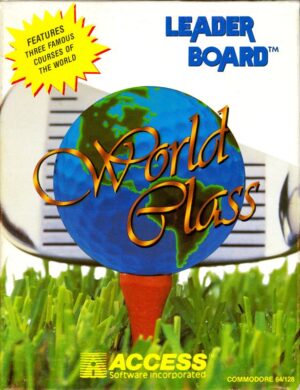Retro Replay Review
Gameplay
Arcade Classics delivers three timeless Atari titles—Missile Command, Centipede, and Ultrapong—with a faithful approach to their original mechanics. Each game offers selectable difficulty levels, allowing both newcomers and seasoned arcade veterans to tailor the challenge to their skill. Missile Command tasks players with defending cities from incoming missiles, requiring quick targeting and strategic ammo conservation, while Centipede’s fast-paced, multi-directional shooting keeps you on your toes as enemy segments descend the screen.
(HEY YOU!! We hope you enjoy! We try not to run ads. So basically, this is a very expensive hobby running this site. Please consider joining us for updates, forums, and more. Network w/ us to make some cash or friends while retro gaming, and you can win some free retro games for posting. Okay, carry on 👍)
Ultrapong expands upon the legendary Pong formula by including both the classic table-tennis mode and a dynamic Hockey variant. The paddle responsiveness is tight and immediate, capturing the simplicity and competitive spirit of the arcade era. Difficulty toggles adjust ball speed, paddle size, and serve frequency, ensuring that matches remain engaging whether you’re playing solo against progressively faster AI or battling a friend in two-player mode.
The dual-mode structure—Classic and Genesis (SEGA on Game Gear)—offers two distinct gameplay experiences. Classic mode preserves the original pixel art, rigid controls, and rudimentary sound, transporting you straight back to the coin-op cabinets of the early ’80s. Genesis mode spices things up with smoother animations, additional visual effects, and remastered audio cues, all without compromising the pure, pick-up-and-play essence that made these titles arcade staples.
Graphics
In Classic mode, Arcade Classics stays true to the blocky sprites and monochrome targets of the original arcade boards. Missile Command’s stark black background and simple vector-style city outlines evoke genuine nostalgia, while Centipede’s vibrant mushroom fields and segmented creatures pop against the screen with retro authenticity. Ultrapong’s minimalist court design, though primitive by today’s standards, conveys the raw charm of early video gaming.
Switching to Genesis/SEGA mode transforms the visual presentation without overhauling each title’s identity. Missile Command gains a subtle parallax backdrop and smoother missile trails, giving depth to the battlefield. Centipede’s centipedes and spiders sport richer color palettes, and the mushrooms now flicker with shading that enhances readability during frantic firefights.
Ultrapong benefits most from the upgrade, with polished paddle textures, dynamic lighting on the puck or ball, and animated scoreboards that flash after every point. The upgraded sound effects—metallic clangs for the puck, explosive booms for city defense—complement the visual overhaul, creating an audiovisual package that feels fresh while honoring the games’ origins. Overall, the graphical enhancements succeed in modernizing the experience without diluting the core aesthetics.
Story
True to the arcade lineage, Arcade Classics doesn’t weave a narrative through its compilation; instead, the “story” is one of preservation and homage. When you start Missile Command, you’re reminded of the Cold War paranoia that inspired its doomsday defense theme. The sense of urgency and looming destruction fuels its implicit storyline—protect civilization at all costs.
Centipede offers another form of emergent storytelling: a simple yet effective conflict between player and nature gone haywire. Each playthrough feels unique, as mushroom placement and insect spawns vary, creating an unscripted progression that keeps you engaged with each session. That spontaneity becomes the tale itself—a never-ending battle against a creeping, segmented menace.
Ultrapong’s narrative is purely competitive, distilling game history to its simplest rivalry: you versus the opponent. Whether you envision a high-stakes hockey match or a quick game of ping-pong, the story unfolds in real time through serves, volleys, and rallies. While there’s no cutscene or plot twist, the emotional peaks and troughs of tight matches provide their own dramatic arc.
Overall Experience
Arcade Classics shines as both a historical anthology and a pick-up-and-play party collection. Its straightforward menu system makes swapping between titles effortless, and the inclusion of difficulty presets ensures that players of all ages and skill levels can find the right challenge. For solo enthusiasts, the adjustable AI and score-tracking create an addictive drive to top your personal best and revisit leaderboards.
The addition of Genesis/SEGA mode is the collection’s standout feature, offering a next-gen gloss that enhances replayability without betraying the original designs. Whether you’re seeking an authentic retro session or a spruced-up blast from the past, this dual presentation mode caters to both desires. Soundtrack purists can toggle between original bleeps and modern remixes, creating a customized audio backdrop for each title.
Ultimately, Arcade Classics provides excellent value for retro gamers and newcomers alike. The three included titles represent foundational pillars of video game history, and their seamless emulation on contemporary hardware is executed with care. With accessible controls, engaging difficulty options, and no-frills menus, this compilation succeeds in preserving arcade heritage while delivering a thoroughly enjoyable package for modern audiences.
 Retro Replay Retro Replay gaming reviews, news, emulation, geek stuff and more!
Retro Replay Retro Replay gaming reviews, news, emulation, geek stuff and more!









Reviews
There are no reviews yet.